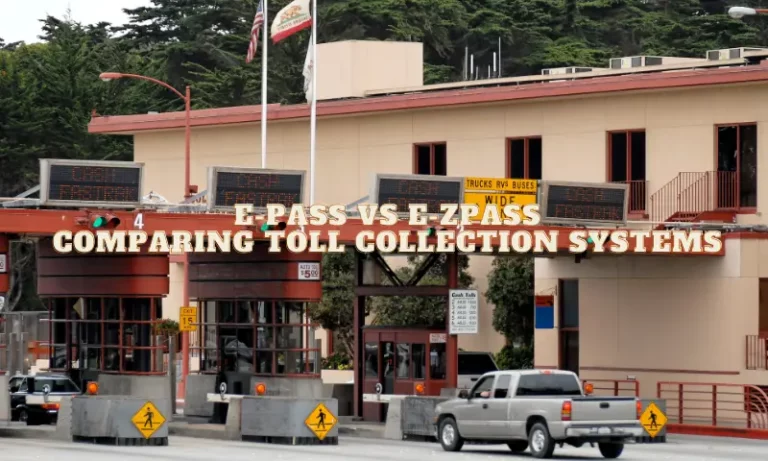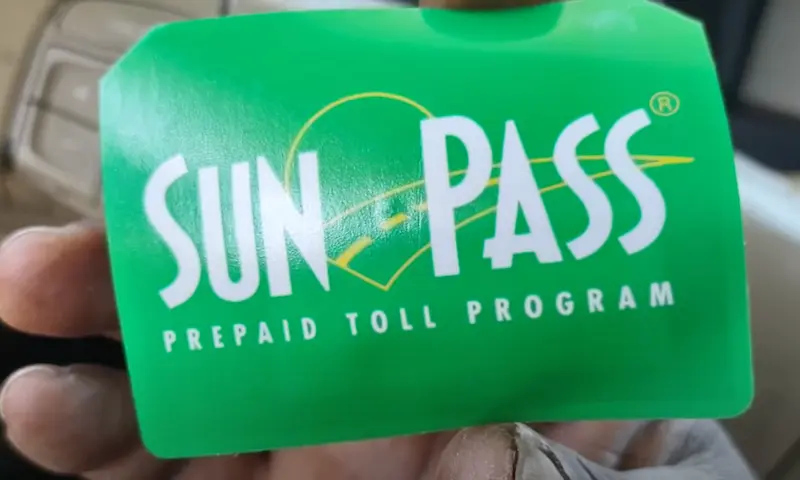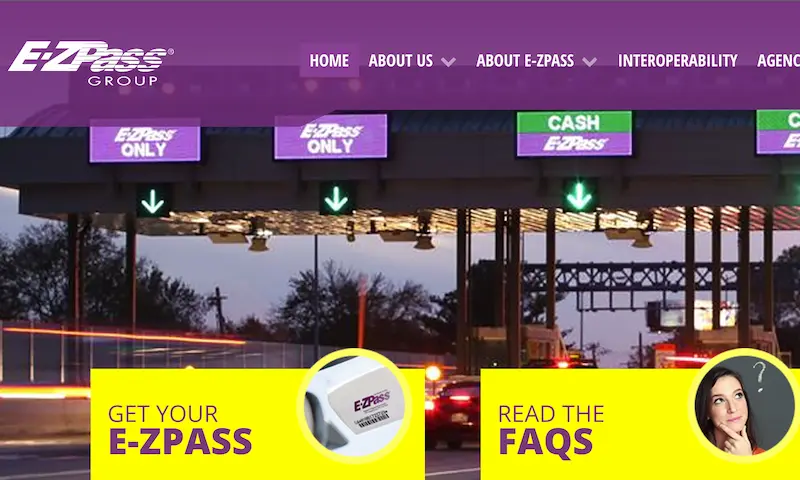Ever found yourself fumbling for change at a toll booth or confused about which electronic pass works where? You’re about to get clarity on two major electronic toll collection systems in the US: E-PASS and E-ZPass. Whether you’re a frequent interstate traveler or just commute locally, choosing the right transponder can save you time, money, and highway headaches.
What Are E-PASS and E-ZPass?
E-PASS and E-ZPass are electronic toll collection systems that let you pay tolls without stopping at toll booths. But they’re not identical twins.
E-PASS is operated by the Central Florida Expressway Authority (CFX) and was one of America’s first electronic toll systems. Its revenues stay in Central Florida, supporting local infrastructure. The system is governed by officials from Brevard, Lake, Orange, Osceola, and Seminole counties, giving it a distinctly local focus.
E-ZPass, on the other hand, is a multi-state consortium that began in 1993. It’s now the largest interoperable toll network in America, spanning across 19 states primarily in the Northeast and Midwest. Unlike E-PASS, E-ZPass benefits are typically tied to your registration state.
Coverage Areas: Where Can You Use Each System?
E-PASS Coverage
E-PASS offers tiered coverage depending on which transponder you choose:
- E-PASS Sticker and CollegePass: Works throughout Florida, Georgia, and North Carolina
- E-PASS Uni (formerly E-PASS Xtra): Works in 19 states from Florida to Maine and west to Minnesota
All E-PASS transponders work on Florida express lanes, including I-4 Express, and can be used for parking at Orlando International Airport and Port Canaveral.
E-ZPass Coverage
E-ZPass is accepted in 19 states: Delaware, Illinois, Indiana, Kentucky, Maine, Maryland, Massachusetts, Minnesota, New Hampshire, New Jersey, New York, Ohio, Pennsylvania, Rhode Island, Virginia, West Virginia, and more recently, Florida.
That’s right—since 2021, E-ZPass has been accepted throughout Florida, a major improvement for northern travelers heading south. Before that, E-ZPass worked only on Central Florida Expressway Authority roads starting from 2018.
Transponder Options: What Hardware Choices Do You Have?
E-PASS Transponder Lineup
E-PASS offers several transponder types to match different travel needs:
| Transponder | Cost | Coverage | Features |
|---|---|---|---|
| E-PASS Sticker | FREE | FL, GA, NC | Permanent window sticker |
| CollegePass | $9.95 + tax | FL, GA, NC | College-branded (UF, FSU, UCF) |
| Uni (White) | $14.95 + tax | 19 states | Portable, E-ZPass compatible |
| Uni – Black | $14.95 + tax | 19 states | Low-profile design, portable |
E-ZPass Transponders
E-ZPass uses a color-coding system:
- White tags for regular passenger vehicles
- Blue for commercial and government employee vehicles
- Orange for emergency vehicles (NY)
- Green for low or zero-emission vehicles (NY)
Prices vary by state, but the functionality remains similar across the network.
Cost Comparison: Initial Expenses and Ongoing Fees
E-PASS Account Requirements
To start with E-PASS, you’ll need:
- A valid driver’s license
- Vehicle license plate numbers
- A credit/debit card for automatic replenishment
- $10 initial deposit for future tolls
The E-PASS mobile app makes it easy to manage your account, check balances, add funds, and track toll activity.
E-ZPass Account Structure
E-ZPass requires a prepaid account with funds representing 1.5 times your average monthly usage. For example, a $1,000/month toll user would need a $1,500 balance. Most users set up automatic replenishment via credit card.
Read also: EZ-Pass Scams Text: What You Need to Know
Discounts and Savings: Who Offers Better Deals?
E-PASS Discount Programs
E-PASS shines with its discount programs:
- Florida Toll Relief Program: Get 50% toll credit automatically with 35+ monthly transactions (2-axle vehicles)
- Volume Savings Program: Additional discounts for frequent CFX expressway users
- Regular discounts: Lower rates than cash or Pay By Plate options
E-ZPass Discounts
E-ZPass typically offers lower rates than cash tolls, but the best discounts apply in your registration state. Some facilities offer special plans like commuter discounts that might provide 22 trips at reduced rates within a 30-day period.
Avoiding Double Charges: A Critical Warning
Here’s something important: If you have both an E-PASS/SunPass and an E-ZPass in your vehicle at the same time, you might get charged twice! To prevent this:
- Remove one transponder when traveling
- Use an RF shield bag for the unused transponder
- Consider switching to the E-PASS Uni, which works everywhere
Which System Should You Choose?
Your best choice depends on your travel patterns:
- Primarily Florida travel: Get the free E-PASS Sticker
- Florida, Georgia, and North Carolina: E-PASS Sticker or CollegePass works perfectly
- Extensive East Coast travel: E-PASS Uni gives you maximum flexibility
- State-specific frequent travel: Consider an E-ZPass from your most-visited state
How Account Management Compares
E-PASS Management Options
E-PASS has made account management convenient with:
- Dedicated mobile app for iOS and Android
- Online account access
- Phone customer service
- In-person service centers
- Cash payment at Reload Lanes (24/7)
E-ZPass Management
E-ZPass offers standard online account management, but doesn’t have the same 24/7 cash reload options that E-PASS provides with its Reload Lanes. E-ZPass management options also vary slightly by state.
Recent Interoperability Developments
The toll world is getting more connected. Since September 2018, the Central Florida Expressway Authority began accepting E-ZPass on its roads, and by 2021, this acceptance expanded statewide. This means northern travelers can now use their E-ZPass throughout Florida without buying a separate transponder.
E-PASS vs. E-ZPass for Different Driver Types
For Commuters
If you commute daily in Florida, the free E-PASS Sticker with automatic volume discounts is your best bet. For Northeast commuters, an E-ZPass from your home state will likely offer the best local discounts.
For Snowbirds
Seasonal travelers between the Northeast and Florida should consider the E-PASS Uni. It works throughout the E-ZPass network plus Florida, Georgia, and North Carolina with a single account and transponder.
For Business Travelers
Business travelers crossing multiple states regularly will appreciate the E-PASS Uni’s broad compatibility and single-account convenience. The E-ZPass works well too, but benefits are typically maximized in your registration state.
Hidden Benefits of Each System
E-PASS has some unique perks:
- 24/7 cash Reload Lanes
- Local revenue investment in Central Florida
- Parking payment capability at Orlando International Airport and Port Canaveral
- College-branded options
E-ZPass advantages include:
- Established presence in the Northeast
- State-specific discount programs
- Color-coded transponders for vehicle types
The Technological Edge: Mobile Apps and Online Tools
E-PASS offers a comprehensive mobile app with features like:
- Real-time balance checking
- Low-balance alerts
- Easy fund addition
- Vehicle information updates
- Toll activity monitoring
- Payment information updates
E-ZPass app features vary by state, with some states offering more robust digital tools than others.
Making the Switch: How to Transition Between Systems
If you’re switching from E-ZPass to E-PASS or vice versa, follow these steps:
- Create a new account with your chosen system
- Receive and mount your new transponder
- Maintain your old account until all pending charges clear
- Request account closure and refund of your balance
- Remove the old transponder from your windshield
Future of Electronic Tolling
Both systems are moving toward greater interoperability. The trend is clear: regardless of which system you choose now, electronic toll collection is becoming more seamless across state lines. The acceptance of E-ZPass throughout Florida signals this shift toward nationwide compatibility.
Maximizing Your Toll Savings
To get the most from either system:
- Choose the right transponder for your travel patterns
- Take advantage of volume discount programs
- Make sure your transponder is properly mounted
- Keep your account funded to avoid violations
- Consider bundling multiple vehicles on one account
By making an informed choice between E-PASS and E-ZPass, you’ll save time, money, and stress on the road. The right electronic toll system isn’t just about convenience—it’s about putting dollars back in your wallet with every mile you drive.
















